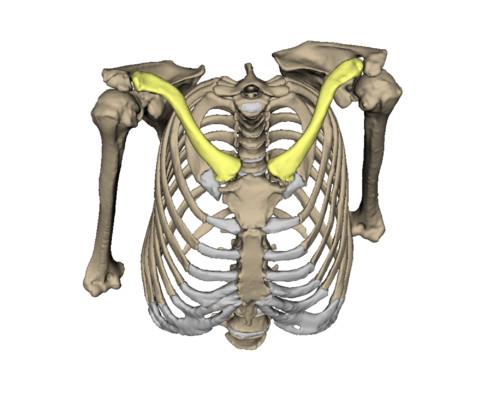Obere Extremität/en: Unterschied zwischen den Versionen
(Die Seite wurde neu angelegt: „---- ==Overview==“) |
|||
| Zeile 35: | Zeile 35: | ||
<div class ="center"> <div class="mw-ui-button">[[Special:MyLanguage/Übungsaufgaben|To the exercises]]</div></div> | <div class ="center"> <div class="mw-ui-button">[[Special:MyLanguage/Übungsaufgaben|To the exercises]]</div></div> | ||
---- | ---- | ||
| − | <div class ="left"> <div class="mw-ui-button">[[Special:MyLanguage/ | + | <div class ="left"> <div class="mw-ui-button">[[Special:MyLanguage/Körperregionen|Back to body regions overview]]</div></div> |
Version vom 5. Februar 2020, 15:46 Uhr
Select your desired anatomical structure of the upper extremities:
Bones
Joints/movement axes
pathways
Musculature
Diseases
Whole upper extremity
Overview
The upper extremities of the human body include the shoulder girdle and the free upper extremities (arms). The shoulder girdle consists of the following bones: Collarbone and Shoulder blade. There are the Acromioclavicular joint and the Sternoclavilar joint. In contrast, Humerus, Ulna and Radius form the bony structure of the arm. They are connected by the Elbow joint. The connection to the hand bones is via the wrist. The hand consists of the Ossa metacarpi, Ossa carpi and Ossa digitorum and has a number of finger joints. The musculature is divided into the Shoulder joint muscles, Shoulder girdle muscles, upper arm musculature, forearm musculature and the short hand musculature.
